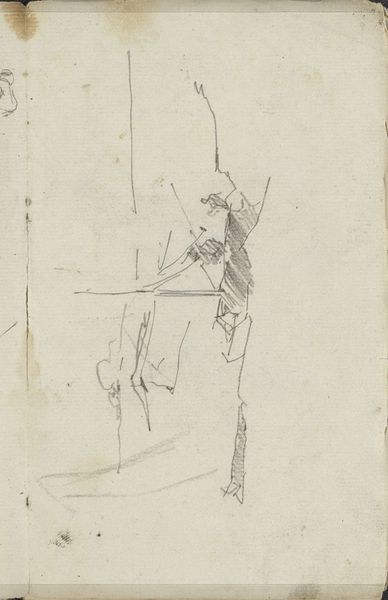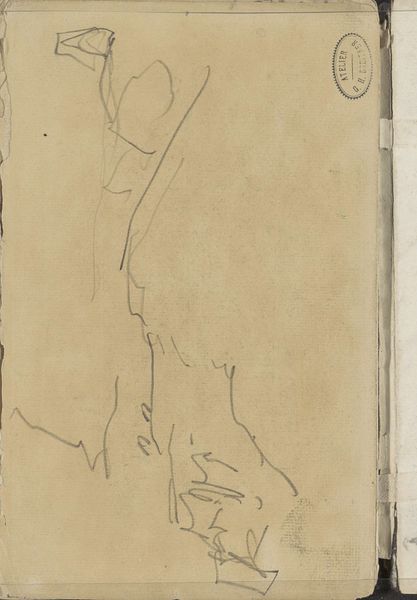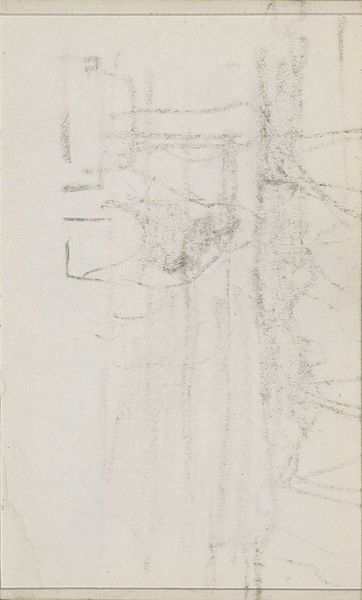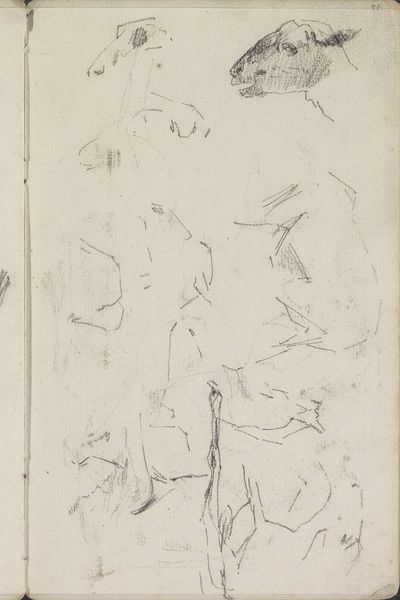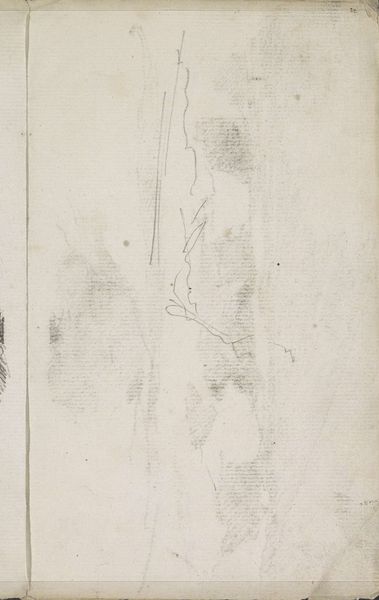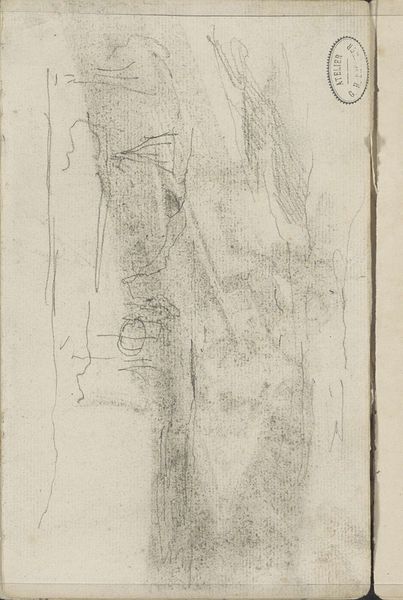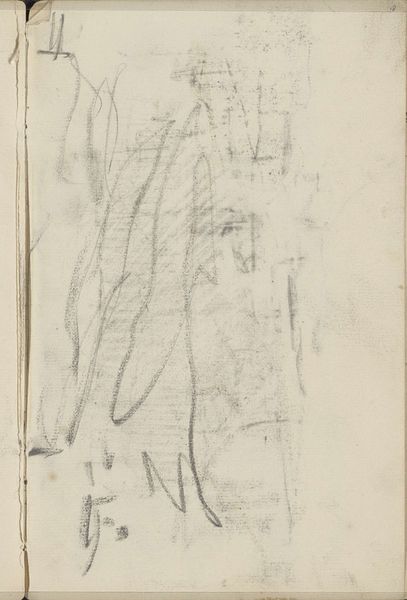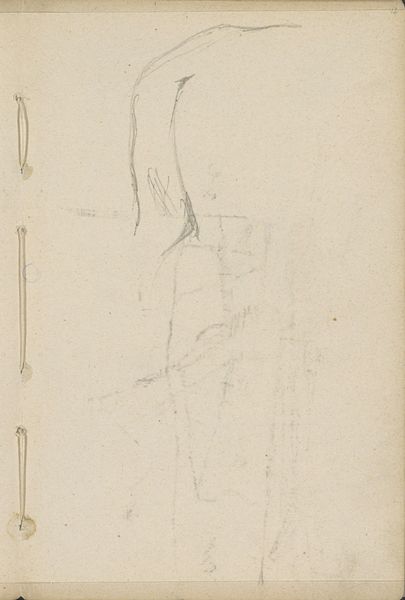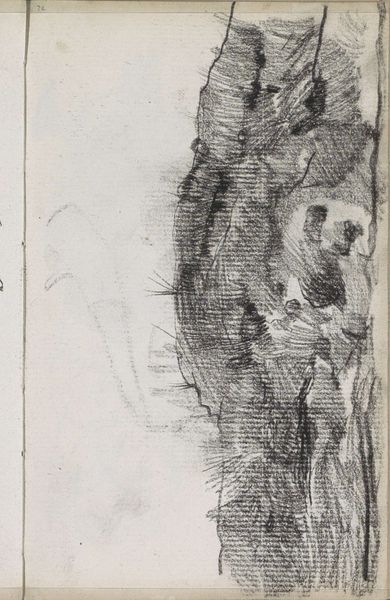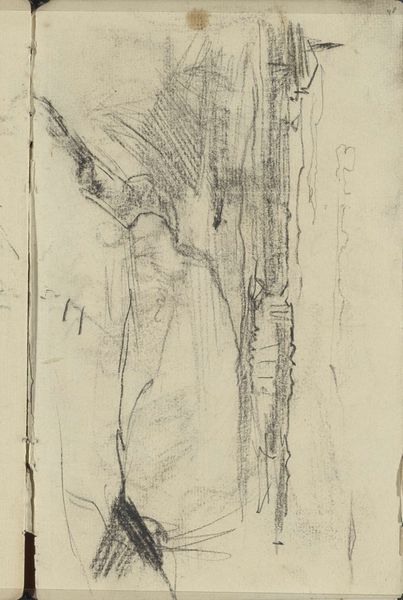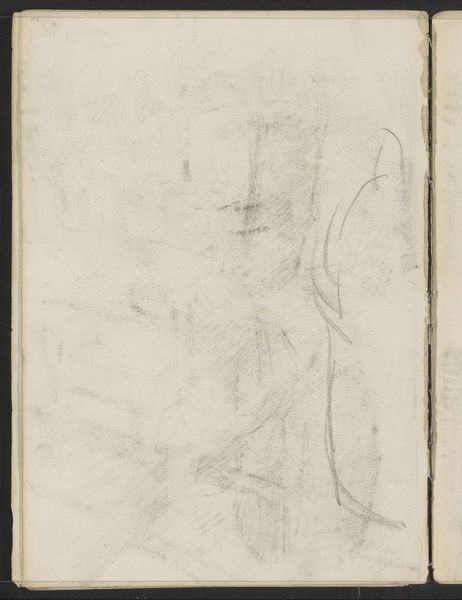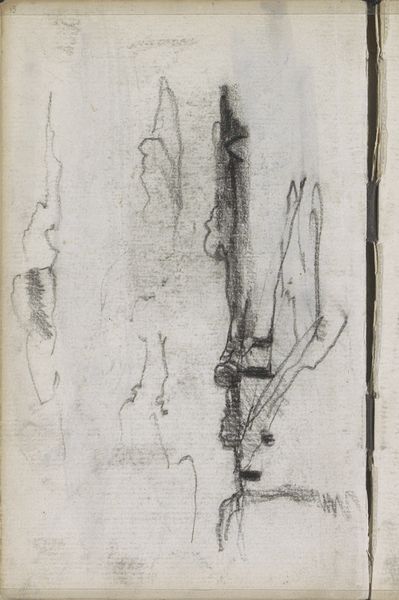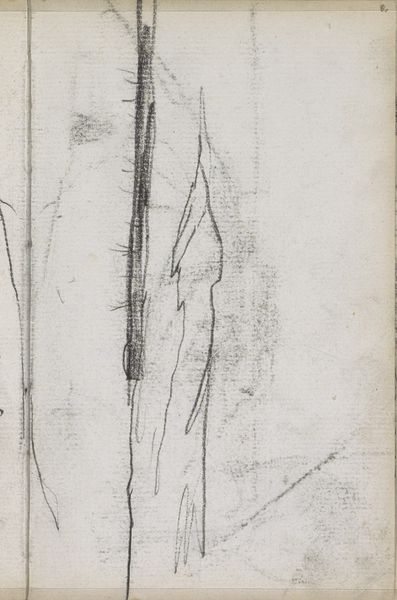
drawing, pencil
#
drawing
#
dutch-golden-age
#
impressionism
#
pencil sketch
#
landscape
#
pencil
Copyright: Rijks Museum: Open Domain
Editor: So, this is George Hendrik Breitner’s “Landschap,” done between 1884 and 1886. It's a pencil drawing held at the Rijksmuseum. It's just a quick sketch, but the starkness of the medium and almost desolate depiction really draws me in. What do you make of it? Curator: As a materialist, my focus shifts from the subject represented to the very means of its creation. Consider the pencil: a humble tool, mass-produced, democratizing art making. Breitner's choice to use it speaks volumes about accessibility and the changing status of art. We must also consider where it was produced; Was the paper of poor quality? Does this matter when interpreting the piece? Editor: That's a perspective I hadn't considered. I was thinking more about how it was a preliminary study, not necessarily intended for public consumption. Curator: Precisely. It unveils the labor behind artmaking. We see Breitner experimenting, wrestling with form. How does this shift your view of the romanticized 'artist' and 'artwork'? Were art supplies easily acquired by common people in the time of its creation? Editor: I suppose it does make the whole artistic process feel more… grounded? Less about divine inspiration and more about plain work, I guess. Did Breitner make this pencil himself? That thought never even occurred to me, and the labor required in its making. Curator: The rise of industrial pencil manufacturing in the 19th century fundamentally altered artistic production. The uniformity and affordability of pencils changed drawing, didn't it? Before then, artists relied on charcoal sticks or lead styluses crafted themselves, which is hardly a readily accessible source. This piece reminds me that even a simple landscape sketch can reveal complex social and material histories. Editor: It’s amazing how much is packed into something so minimal when you look at it from that perspective. I’ll never see a pencil the same way! Curator: Nor will I! It speaks of labor and craft and mass manufacture all in one breath.
Comments
No comments
Be the first to comment and join the conversation on the ultimate creative platform.
